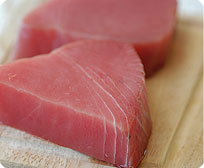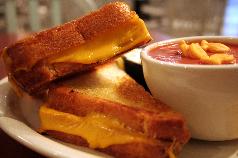 My mother stayed with us during her recent visit from back east. She
emerged early each day from the back bedroom in need of coffee. In the
kitchen she would find me up to my elbows in three-grain biscuit dough
or in the midst of mixing a large oven baked pancake, or perhaps
dropping oatmeal scones onto a cookie sheet. I was always in the midst
of something made from scratch, time consuming and terrifically messy.
My mother stayed with us during her recent visit from back east. She
emerged early each day from the back bedroom in need of coffee. In the
kitchen she would find me up to my elbows in three-grain biscuit dough
or in the midst of mixing a large oven baked pancake, or perhaps
dropping oatmeal scones onto a cookie sheet. I was always in the midst
of something made from scratch, time consuming and terrifically messy.
A ritual that was met with a quizzical look and her quiet reproach, as if I couldn’t hear her say, “Nu? Whats wrong with frozen waffles?” My childhood breakfasts came straight out of a box from the freezer in the cold mid-western kitchen where I grew up. My mother taught in downtown Detroit, and early morning school days were mostly about getting up and getting out. Yet, somewhere in between the up and out part, I remember a breakfast ritual that my mother and I shared, just her and I, before she left for work.



 ed honey
ed honey A Monte Cristo consists of ham, turkey or chicken, and Swiss cheese sandwiched between two slices of white or challah bread that is dipped in an egg batter, then grilled or fried in butter until golden brown. It is often dusted with confectioners’ sugar and served with a side of red currant jelly.
A Monte Cristo consists of ham, turkey or chicken, and Swiss cheese sandwiched between two slices of white or challah bread that is dipped in an egg batter, then grilled or fried in butter until golden brown. It is often dusted with confectioners’ sugar and served with a side of red currant jelly. Tuna Ingredients
Tuna Ingredients We're not sure who makes these decisions...
We're not sure who makes these decisions...
